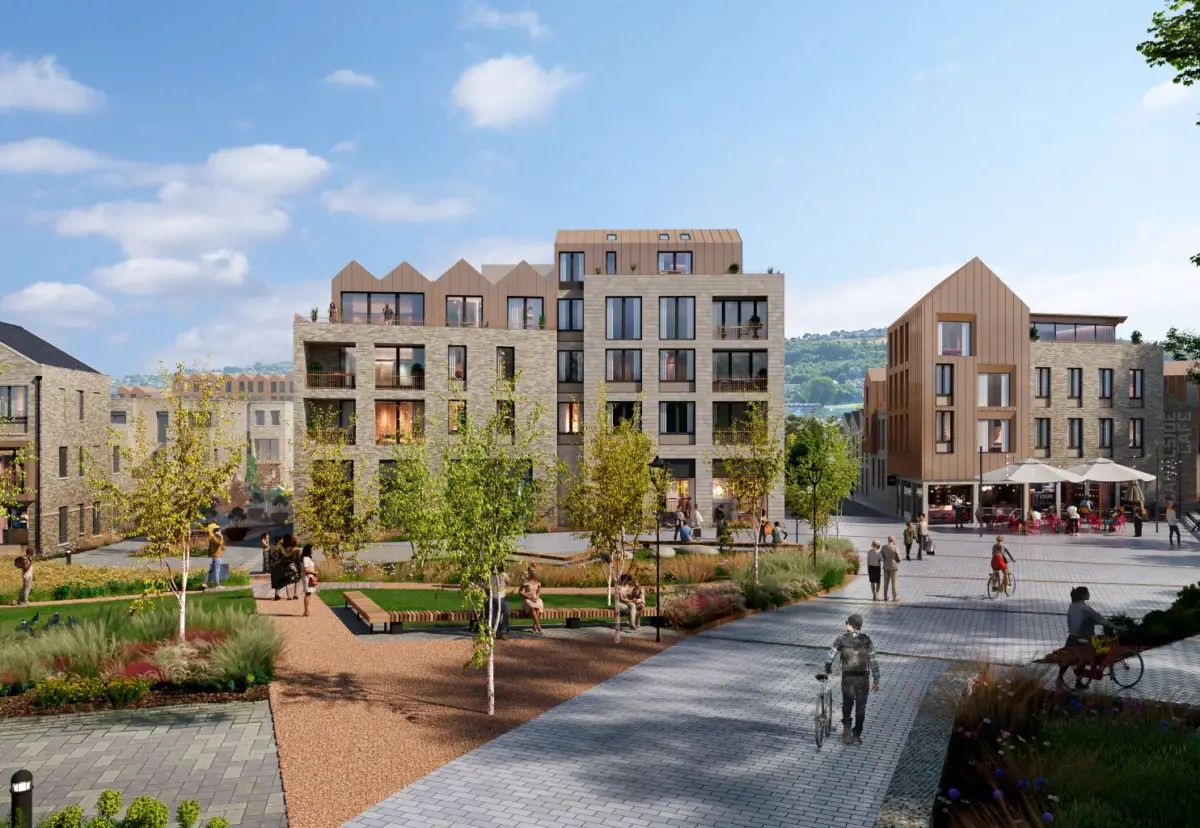Saltaire Village, a 290-home development has been accepted near the Salts Mill World Heritage Site in Saltaire. The location is on the outskirts of Bradford. The Saltaire Village will be built on an 11-acre site. The area is sandwiched between the River Aire and the Leeds & Liverpool Canal. It was previously home to an HMRC office complex that was closed in October 2021.
In addition to homes, it will build over 5,000 square feet of small commercial office space. The offices are designed for flexible working. Furthermore, there will be a café overlooking a new ‘pocket’ park and piazza.
A large riverside park will connect Saltaire Village development to the River Aire. Thus, they will provide woodland, grasslands, and lawns for natural flood water storage. The current five-story HMRC building, which is made up of two large hexagonal office blocks, will be brought down first as part of the proposal. Depending on how things go, this could begin as early as autumn of next year.
Read Also: Geophysical survey completes on the Galatea-Galene offshore wind farm in Sweden
Saltaire Village will offer much needed family housing
“Our proposals for Saltire Riverside herald another significant addition to Artisan’s enviable list of transformational regeneration projects. They are in highly desirable regional locations across the UK,” said James Bulmer, development director for Artisan North. “Progressing such a massive development on the outskirts of a UNESCO World Heritage site brings its own set of challenges and responsibilities. Thus, we have taken the time to understand and reflect the Salts Mill location’s special historical contexts.”
“We want this to be a new interpretation of neighboring Saltaire. It will be bringing much required better family housing in an accessible, a connected, and environmentally sustainable setting. Furthermore, it will have the added benefit of low energy costs and exemplary green credentials,” he continued. He added that it is an incredibly impressive development that will spectacularly open up a large riverside region. It has effectively been inaccessible to the public since the 1970s when the HMRC complex was built.

